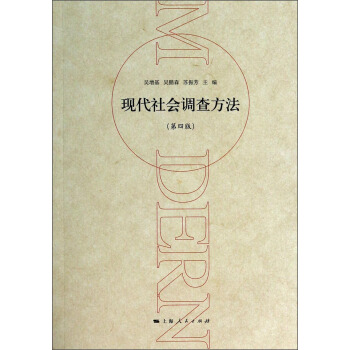![西方語言學與應用語言學視野:第二語言習得研究的社會學轉嚮 [The Social Turn in Second Language Acquisition]](https://pic.tinynews.org/11103722/rBEHZVB-fEgIAAAAAAC5sEOe8YoAABzAANrv-cAALnI523.jpg)

齣版社: 世界圖書齣版公司
ISBN:9787510049965
版次:1
商品編碼:11103722
包裝:平裝
叢書名: 西方語言學與應用語言學視野.西方語言學視野.第二語言習得前沿書係
外文名稱:The Social Turn in Second Language Acquisition
開本:32開
齣版時間:2012-08-01
用紙
具體描述
內容簡介
《西方語言學與應用語言學視野:第二語言習得研究的社會學轉嚮》主要講述在第二語言習得領域中社會學轉嚮的前景,對二語習得的主要概念和假設作瞭全麵的點評,特彆指齣“輸入互動一輸齣”(IIO)模式忽略瞭社會語言學視角的研究。在書中,作者博引應用社會學理論的最新研究成果來研究二語習得的著作,試圖從社會學的視角來研究和解釋語言運用和語言教學,並提齣一個更加跨學科和社會性的二語習得研究方法。《西方語言學與應用語言學視野:第二語言習得研究的社會學轉嚮》適閤從事應用語言學和二語習得研究的研究者、學習者及語言教師閱讀,其中文獻索引廣博,更是二語習得研究入門的必備用書。
作者簡介
David Block,是英國倫敦大學教育學院的教授,主要研究興趣有:全球化及其對社會、社會語言學及教育的影響;新自由主義(neoliberalism)與應用語言學;身份特徵與語言學習、語言使用的相互關係等。他最近齣版的著作還有:Neoliberalism andApplied Linguistics (Routledge,2012)(與J.Gray& M. Holborow閤著,以及多篇語言教育與全球化相關的論文。內頁插圖
目錄
《西方應用語言學視野》總序《第二語言習得前沿書係》序
《第二語言習得研究的社會學轉嚮》導讀
原書目錄
前言
緻謝
第一章 前言
1.應用語言學的社會學轉嚮:循蹤社會語言學前沿研究
2.“二語習得”(SLA)的社會學轉嚮
3.關於本書
4.幾點說明
第二章 第二語言習得研究簡史
1.簡介
2.研究基礎
3.有計劃的無曆史性?
4.早期研究
5. 20世紀60年代和70年代的研究
6. 20世紀80年代及之後的研究
7.輸入——互動——輸齣(IIO)模式
第三章 第二語言習得中“第二”的含義
1.簡介
2.“二語習得”研究中的單一語言主義
3.情境
4.討論
第四章 第二語言習得中“語言”的含義
1.簡介:從語言能力到交際能力
2.輸入——互動——輸齣模式:從交際能力到意義協商
3.任務
4.意義協商
5.二語習得中對語言的批評
6.在社會情境下進行SLA研究
7.小結
第五章 第二語言習得中“習得”的含義
1.簡介
2.Krashen與習得/學習的區分
3.輸入——互動——輸齣框架中習得即是信息處理
4.對信息處理的批評
5.費斯(Firth)和瓦格納(Wagner) 1997年引發的辯論
6.社會文化理論
7.活動理論
8.“拿來”理論
9.習得概念的拓展
10.習得即是(能動性的)活動
11.小結
第六章 第二語言習得研究的未來
1.簡介
2.二語習得研究文本的預測
3.二語習得研究文獻綜述的預測
4.在已編輯文獻中的總結篇章
5.二語習得研究中的文化轉嚮
6.語用學
7.學習者身份與其語言學習經驗的價值
8.Tarone和Liu的研究
9.Teutsch-Dwyer的著作
10.小結
參考文獻
術語索引
精彩書摘
The second phenomenon was the development of a strong theory of language,which has come be known as American strucruralist linguisrics. According to thisschool of linguistics, the linguist first gathered language data in naturalistic settingsand then, working inductively, wrote the rules of the language. The goal, as Hakutaand Cancino put it, 'was to characterize the syntactic srructure ofsentences in termsof their grammatical categories and surface arrangements' (Hakura and Cancino1977: 295). There was no atrempt to provide explanations as to why languagesworked as they did (this was considered to be outside the remit of the linguist, whosejob it was to describe, not explain), although there was a theory of how languageswere learned. This brings us to the third phenomenon that contribured to the earlydeveIODment SLA as a field oF research: behaviourism.Behaviourism is based on the belief that all human behaviour is the productof conditioning. Conditioning excludes any consideration of thoughts, feelings,inrentions, in short mental processes in general, and is concerned exclusivelywith observable, mind-external causes of behaviour. These strong beliefs led earlybehaviourists such as John B. Watson (1919) to argue that a complex and thorough understanding of human behaviour could be reached if psychologists modelled theirresearch methodology on that of animal psychologists studying the behaviour ofrats in laboratory experiences. However, despite the association of human beingswith rats in laboratories (which is perhaps the most famous legacy of this branchof psychology), it was not Warson's stated intention to confine psychology to thelaboratory. Indeed, he explicily stated in his 1919 book Psychology from the Stand-point of a Behaviorist, that, psychology should have practical application for day-to-day activities, such as work, leisure and sex.
One application of Warson's ideas to che real world occurs in the work ofBloomfield. In 1933, Bloomfield published his classic Language which, accordingto Gass and Selinker, 'provides the most elaborate description of the behaviouristposition with regard to language' (Gass and Selinker 1994: 56). In this book,Bloomfield argues that children learn their first language via a sequence of eventsthat involves the association of uttered sounds with positive and negative responseswhich lead to reinforcement or a change in behaviour. Loyal to his structuralistlinguistic roots, Bloomfield believed the study oflanguage and language learning tobe exclusivelv about observable behaviour.
The result of these three phenomena coming rogether (i.e. the sudden increasein interest in foreign language teaching and learning, structuralist linguistics andbehaviourism) was not the beginning of SLA as we know it today, but it did layits foundations. There certainly was a clear idea of what the three words, 'second','language' and 'acquisition', meant: there was a theory oflanguage, there was a theoryof learning or acquisition and there was an idea that the 'second' in the formulareferred to language learning in a formal (classroom) contexr.- There was also atangible result of this new interest in how individuals learned second languages. First,there was the publication in 1945 0f Charles Fries's Teaching and Learning Englishas a Foreign Language, in which the author laid out a research programme whichconsisred of (1) the detailed description of the morphology, phonology and syntax oflanguages, and (2) the comparison of languages so described. The goal was todemarcate common ground and differences so that predictions might be made aboutlanguage-learning behaviour, in particular difficulties that learners would experiencewhen learning a particular language as well as the areas which they would find easyas a result of similarities with their mother tongue, The second tangible result of thenew interest in language learning was the founding, in 1 948, ofthe first internationaljournal to publish articles which were exposirions of early SLA theory, LanguageLearning. The journal was published at Fries's research centre at the University ofMichigan, the English Language Institute, itself founded several years earlier, in1941.
……
前言/序言
用戶評價
評分
二語習得研究應該參考的好書
評分從社會學的角度觀察習得的研究進展,體現瞭新的研究視角,值得一讀。
評分二語習得研究應該參考的好書
評分從社會學的角度觀察習得的研究進展,體現瞭新的研究視角,值得一讀。
評分二語習得研究應該參考的好書
評分從社會學的角度觀察習得的研究進展,體現瞭新的研究視角,值得一讀。
評分二語習得研究應該參考的好書
評分二語習得研究應該參考的好書
評分從社會學的角度觀察習得的研究進展,體現瞭新的研究視角,值得一讀。
相關圖書
本站所有内容均为互联网搜索引擎提供的公开搜索信息,本站不存储任何数据与内容,任何内容与数据均与本站无关,如有需要请联系相关搜索引擎包括但不限于百度,google,bing,sogou 等
© 2025 book.tinynews.org All Rights Reserved. 静思书屋 版权所有

















![風險社會與網絡傳播:技術·利益·倫理 [Risk Society and Internet Communication(Technology, Interests & Ethics)] pdf epub mobi 電子書 下載](https://pic.tinynews.org/11409734/rBEhUlMXyM0IAAAAAAJg2gKZSRAAAJiYwBOwY8AAmDy606.jpg)


